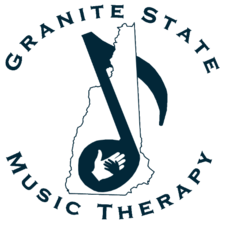5 Ways to Support Learning with Music for the Neurodivergent
There are many ways you can use music to help students on the Autism spectrum work on different skills needed to be successful in the classroom. I have put together a list of the five that I feel I work on the most in my music groups.
5 Key Skills
1 - Attention
I have found that students who are on the Autism spectrum can often have difficulty attending to a task. Music is a wonderful way to make learning a multi-sensory experience. Music activates both hemispheres in the brain, and I have found that it draws in the students I work with in a way that typical spoken language does not. I use pre-written songs with directions that I want the students to follow, and I also make up melodies on the spot while I say what will happen next or give them directions to follow. I often use a visual schedule, so the students know what to expect next and use the same transition song between each intervention. This helps the students understand what is coming next, even if processing spoken language is difficult for them. I also use stopping and starting in the music to support attention. I want it to be somewhat predictable so they are set up for success, but not so predictable that I lose their attention. Music is great for this because you can create pauses organically throughout the musical interventions, waiting for eye contact and cues to know that the student has re-engaged.
2 - Social Interaction
Social skills may not be the first thing that comes to mind when thinking of academics, but it absolutely affects a student’s learning. Being able to be aware of their peers, take turns, and make eye contact when greeted are all skills that are significant in their overall learning experience. Music is an excellent tool when it comes to working on social skills in a non-intrusive way. Just sharing space with other students and making music together is a way to connect. They are following the same actions and syncing to the same rhythm, which connects them without the pressure of specific expectations or looking at each other. I often incorporate passing the drum in my sessions so the students have to work on waiting for their turn. It is a way to bring awareness to their peers in a very concrete way. For example, I may say, “our friend is playing the drum. Let’s listen!” It is a natural way to gently bring their awareness to the peer who is playing.
3 - Self-Regulation
Students sometimes have a hard time sitting in their chair all day, so music is a great opportunity to move their bodies within structure. I have songs that get them moving, which may be marching around the room or reaching up high with a shaker. Either form of movement works towards regulating their bodies. Students that are sensory seeking often need extra deep pressure, which can be incorporated by having students squeeze their own arms in a hug. A healthy coping skill has been modeled for them that they can use throughout the day whenever they need it.
4 - Impulse Control
Music is a great medium for working on impulse control. It naturally has a rhythm and certain time for when each action occurs, which helps with waiting until it is the right moment. The students also learn to wait as I pass out instruments. It is visual and concrete, and they can see when it is almost their turn. Some students will shout out the color they want before I even stand up, so it is a great learning opportunity to not only wait until I get to them, but to politely use an entire sentence to request the color they want.
5 - Flexibility
I purposely use a similar routine each time, but I change the songs or order within the structure to help them learn flexibility. This is because life is full of surprises, and no matter how much planning our amazing teachers to, there will always be things that are different. Maybe there will be a fire drill or a two-hour delay because of snow. Sometimes I provide specific choices and sometimes neither one is the color they wanted, but it gives them an opportunity to work through those feelings and process the disappointment in socially appropriate ways. It is a way to work on these skills in an already safe environment, because they know the session will begin and end with the same song and roughly follow the same routine even if some of it is different.
A Takeaway
Our neurodivergent students are great learners. Sometimes they just need a different amount of sensory input than neurotypical learners. Music is a great opportunity to allow this to happen naturally in a fun and supportive learning environment.
Author: Jenni Chute, MA, MT-BC
Editor: Sonya Imperio, MT-BC
Stay up-to-date with our latest resources!
Sign up for our newsletter!
We value your privacy.








